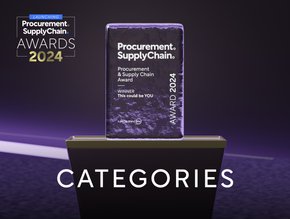Three industries ripe for IoT transformation in 2018

The internet of things (IoT) is all around us. From providing doctors with patient data in real time, to tracking vehicle performance, to automating building systems, IoT is transforming businesses and enabling organisations to create entirely new systems and services, engage customers and drive growth.
Despite the huge rise in connected devices, there are still some industries that are hesitant to adopt new technologies, regardless of the business benefits. With nearly 20bn devices[1] predicted to be connected to the IoT by 2020, it is essential that organisations invest in new IoT technologies to keep up with evolving customer demands.
With IoT’s growing maturity comes new approaches, business models, and solutions that will see organisations ramping up deployments and incorporating this technology into their products, processes and workflows.
Almost every industry can benefit from investing in IoT but the important thing to consider is that IoT cannot be deployed in silo. Connecting a business from a technology perspective is all about leveraging mobile (where the business information resides) with IoT. Mobility has taken functionality way beyond the four walls of a business but IoT stands to amplify this.
The communication between mobile and IoT allows even more information to be connected to back office systems even without the need for human intervention. As the adoption of this technology continues, these three industries are ripe for IoT transformation.
Healthcare
IoT has taken healthcare by storm. From wearables that track patient health, to providing remote care to patients who live in isolated areas, the shift towards the digitalisation of the healthcare industry has seen more healthcare workers getting connected and relying on mobile devices. The biggest benefit of IoT in healthcare is to keep patients out of the hospital by providing more effective home care. This is helping to reduce re-infections but also reduces costs, especially when it comes to monitoring patients with chronic illnesses.
Mobile devices are enabling doctors, nurses and other healthcare practitioners to monitor patients outside of the hospital; wearable devices track pulse rates and motion sensors and trackers protect more vulnerable patients. These remote patient monitors provide richer information in a timelier fashion. The ability to now track patients over a 24/7 period - compared to an hour’s assessment in a hospital room – can not only help to diagnose illnesses quicker, but can also measure the effect of treatment. If a medication impacts the patient’s readings, a doctor can be aware of this problem before a patient tells them.
This method of patient tracking not only reduces the complexity for the healthcare facility in offering an exemplary level of patient care, but also reduces the cost. Wearable devices are extremely cost effective and the accuracy of the data reduces patient time in the hospitals, which has another positive impact on costs.
As more and more medical devices become internet-connected with this evolving technology, it is vital that the healthcare industry ensures its compliant with data protection laws when it comes to the transportation of this data. Operators must ensure that medical grade devices are configured effectively, that passwords and encryption is in place and that the connection between the devices is secure to protect patient data from potential hackers.
See also:
Transportation and Logistics
Whether by air, ground or sea, transportation and logistics are essential components to many enterprises’ productivity, and access to real-time data is critical. There is a growing reliance on IoT and mobile devices to provide visibility into the supply chain right through to personnel, equipment and transactions that enable enterprises to better support peak operations in real time.
Transportation and logistics businesses are focused on maximising supply chain efficiency to sustain profitability and efficiencies. IoT has already begun to disrupt this industry through systems that are able to sense and respond to vehicle usage and changes in real-time, managing downtime to operate fleets at the lowest possible cost.
IoT provides the ability to track where vehicles are in their route, ensuring they are delivering packages and goods on time and being able to reroute trucks based on live situations such as accidents, road closures or weather conditions. With workers constantly on the move, visibility into where these assets are, and what they are doing can improve business operations.
With the announcement of driverless trucks, IoT will play a major role in tracking vehicles on their routes, deploying preventative maintenance, observing driver behavior and monitoring vehicle security with the goal of improving the bottom line.
Retail
Retail is one of the most fast-paced industries globally. According to Accenture[2], the IoT movement offers retailers opportunities in three critical areas: customer experience, the supply chain and new channels along with revenue streams.
IoT is already being used in retail, but 2018 will be the year where this technology really transforms the customer experience. We’ve already seen an increase in customer touchpoints – such as in-store tablets and online chatbots – but this will evolve rapidly over the next 12 months as shops become even more connected.
For example, we will increasingly see sensors being used for inventory management, allowing a connection to be made from back-end inventory to in-store and online. Also, the in-store customer experience is transforming to meet the demands of the digital consumer – as such, beacons will be used to push relevant messages at point-of-sale and sensors will be in operation to track patterns to develop better instore layouts.
Consumers are now taking these features of the technology into account. According to our own research[3], 67% of shoppers are more likely to shop at a store that integrates technology and over two-thirds believe retailers that utilise more technology enable a faster shopping experience.
What’s most exciting for the coming year is how extensive the applications of IoT in retail are. Robots will stack shelves, freeing up staff to add value to the customer, while smart mirrors will let customers virtually try on clothes and connected beacons will send out personalised offers to consumers immediately as they enter the shop.
Future-proofing IoT
This year will be a breakthrough in IoT usage and applications across a wide variety of industries. The ubiquitous nature of IoT will be evident and the technologies driving the usage will continue to emerge and evolve to meet the important needs of deployment, distribution and security.
SOTI MobiControl is an enterprise mobility management solution that secures and manages IoT devices, offering geo fencing functionality to track devices, allowing remote management and keeping both the device and connection secure.
As with any early technology deployment, the standardisation of IoT will be a critical consideration across all industry sectors, to avoid fragmentation and allow integration of all business operations that need to be built in.
Each industry will be uniquely impacted by IoT but essentially they will all experience a more streamlined business process because of increased connectivity, reliability and efficiency taking business connectivity to the next level.
Richard Smith, Regional Manager at SOTI






